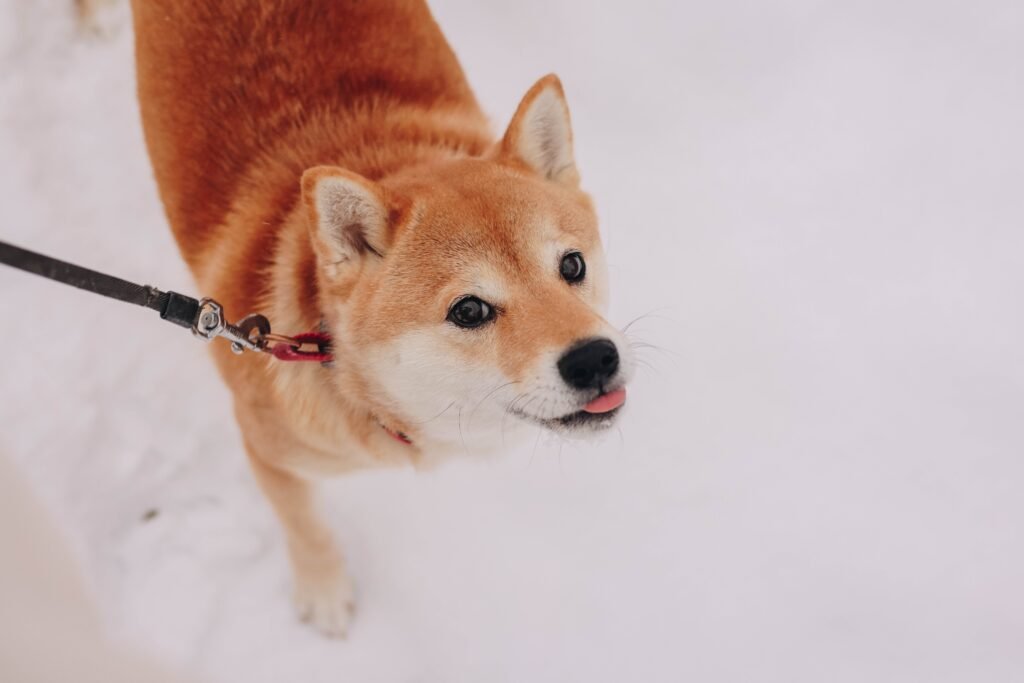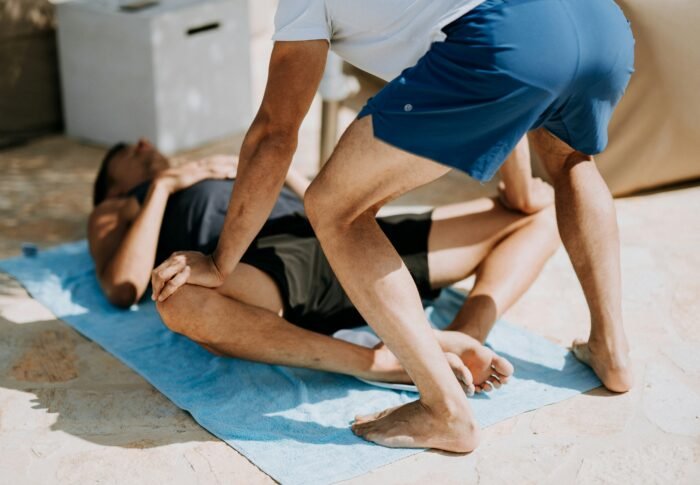
Effective Dog Training Tips
Are you struggling to train your furry best friend? Look no further! In this article, we will provide you with some effective dog training tips that will help you establish a strong bond with your four-legged companion. From basic obedience commands to tackling behavioral issues, we’ve got you covered. So, grab your leash and get ready to embark on a training journey that will transform your dog into a well-behaved and happy member of your family!

This image is property of images.pexels.com.
Find products like these on Amazon!
Basic Commands
Sit
Teaching your dog to sit is one of the most basic and fundamental commands. It is not only a useful command for everyday situations but can also be a foundation for many other commands. To teach your dog to sit, start with a treat in your hand and bring it close to your dog’s nose. Slowly move your hand upward, causing your dog to naturally lower its back end. As your dog’s bottom hits the ground, say the word “Sit!” in a happy and positive tone, and then immediately give your dog the treat as a reward. Repeat this process several times until your dog understands the command.
Stay
The “Stay” command is crucial for keeping your dog safe and under control in various situations. To teach your dog to stay, start with your dog in a sitting position. While facing your dog, hold your hand out in front of you with your palm open and say the word “Stay” in a calm but firm voice. Take a step back and pause briefly before returning to your dog. If your dog remains in the sitting position, give them praise and a treat as a reward. Gradually increase the distance and duration of the “Stay” command until your dog can stay in place reliably.
Lie Down
Teaching your dog to lie down is another important command that can help calm them and keep them obedient in different situations. To teach your dog to lie down, start with your dog in a sitting position. Hold a treat in your hand near your dog’s nose and slowly move your hand downward toward the ground. As your dog follows the treat with its nose, their body will naturally lower to a lying position. Once they are fully lying down, say the word “Down” in a positive tone and give them the treat as a reward. Repeat this process until your dog can lie down on command.
Come
The “Come” command is crucial for ensuring your dog’s safety and can help prevent them from getting into potentially dangerous situations. To teach your dog to come when called, start in a small and controlled environment. Get down to your dog’s level and say their name followed by the word “Come” in an excited and inviting tone. Encourage them to come to you by opening your arms or crouching down. When your dog comes to you, be sure to reward them with praise and a treat. As your dog becomes more reliable with the command, gradually increase the level of distractions in the environment.
Leave It
The “Leave It” command is essential for teaching your dog to let go of or ignore something they should not be interacting with. To teach your dog to leave it, start with a treat in your hand and close your hand around it. Show your closed fist to your dog, and when they show interest and begin to sniff or paw at your hand, say the command “Leave It” firmly but not aggressively. Wait until your dog stops trying to access the treat and looks away, then open your hand and reward them with a different treat. Practice this command with various objects and gradually increase the level of difficulty.
Positive Reinforcement
Reward-Based Training
Using reward-based training is an effective and humane way to teach your dog new behaviors and commands. By rewarding your dog with treats, praise, or play, you are reinforcing positive behaviors and encouraging them to repeat those behaviors in the future. When your dog successfully performs a desired behavior, such as sitting or staying, immediately reward them with a treat and verbal praise. This positive association will motivate your dog to continue obeying commands and make the training process enjoyable for both of you.
Clicker Training
Clicker training is a popular positive reinforcement training method that uses a small handheld device called a clicker. The clicker emits a distinct clicking sound when pressed, which signals to your dog that they have performed the desired behavior correctly. To use clicker training, start by conditioning your dog to associate the sound of the clicker with a reward. Click the clicker and immediately offer your dog a treat. Repeat this process several times until your dog consistently looks for the reward when they hear the click. Then, use the clicker to mark and reinforce desired behaviors during training sessions.
Treat Training
Using treats as a reward during training is a highly effective way to motivate your dog and reinforce positive behaviors. Choose small, soft, and easily consumable treats that your dog enjoys. Use these treats to reward your dog immediately after they perform a desired behavior. The treat should be given within a few seconds of the desired behavior to help your dog make the connection between the behavior and the reward. Be consistent with the treats and gradually decrease their frequency as your dog becomes more proficient in obeying commands.
Praise and Affection
In addition to treats, verbal praise and physical affection are powerful forms of positive reinforcement. Dogs thrive on praise and love to hear their owners’ happy and encouraging voices. When your dog successfully follows a command or behaves appropriately, immediately offer verbal praise such as “Good job!” or “Well done!” Use an upbeat and excited tone to convey your satisfaction. Along with verbal praise, physical affection such as petting, gentle strokes, or a belly rub can further reinforce positive behaviors. Always make sure your dog feels loved and appreciated during the training process.
Find products like these on Amazon!
Consistency and Timing
Setting a Routine
Establishing a consistent training routine is vital for your dog’s learning and understanding of commands. Dogs thrive on routine and repetition, so it is important to set aside dedicated time each day for training sessions. Choose a quiet and distraction-free environment where you and your dog can focus. Keep training sessions short, typically around 10-15 minutes, to maintain your dog’s attention and prevent boredom. Consistency in the timing and duration of training sessions will help your dog develop a routine and associate that time with learning and obedience.
Immediate Rewards or Corrections
When training your dog, it is crucial to provide immediate rewards or corrections to reinforce their behavior. Dogs have a short attention span, so delaying rewards or corrections may cause confusion or unintended associations. As soon as your dog performs the desired behavior, quickly offer the reward, such as a treat or verbal praise. This immediate reinforcement will help your dog understand which behavior is being rewarded. Similarly, if your dog makes a mistake or does not comply with a command, provide a gentle but firm correction in a timely manner. This timing ensures that your dog associates the correction with their behavior.
Avoiding Mixed Signals
Consistency in your commands and body language is essential to avoid sending mixed signals to your dog. Dogs rely on consistent cues to understand what is expected of them. Use the same command words for each behavior and avoid using similar words that may confuse your dog. For example, if you use “Down” to mean lie down, do not use “Off” to mean the same command. Additionally, use consistent body language, hand signals, and tones of voice to cue your dog. This consistency will help your dog understand and respond appropriately to your commands, minimizing confusion and facilitating effective training.
Socialization
Early Exposure
Early socialization is crucial for raising a well-adjusted and confident dog. Expose your puppy to various people, animals, and environments during the critical socialization period, which typically occurs between 3 and 14 weeks of age. Introduce your puppy to different types of people, including children, adults, and individuals wearing hats or glasses. Allow them to interact with friendly, well-behaved dogs of all sizes and breeds. Gradually expose your puppy to different environments, such as parks, busy streets, and various indoor settings. This early exposure will help your dog develop positive associations and reduce the likelihood of fear or aggression in new situations.
Dog Parks and Playdates
Taking your dog to dog parks or arranging playdates with other well-behaved dogs can contribute to their socialization and overall development. Encourage positive interactions between your dog and other dogs by allowing them to sniff and greet each other while closely monitoring their behavior. Observe your dog’s body language and intervene if any signs of aggression or discomfort arise. Both dog parks and playdates offer the opportunity for your dog to learn appropriate play behavior, read social cues, and practice good manners in a communal setting.
Positive Experiences
Ensure that your dog’s experiences with new people, animals, and environments are positive and enjoyable. Always prioritize your dog’s safety and comfort, and gradually expose them to more challenging or unfamiliar situations. Reward your dog with treats, praise, and attention for calm and confident behavior in new situations. By associating positive experiences with new stimuli, your dog will become more resilient, adaptable, and comfortable in various environments.
Positive Reinforcement in New Situations
When introducing your dog to new situations or experiences, use positive reinforcement to encourage and reward their appropriate behavior. Begin in a calm and controlled environment, gradually exposing your dog to the new stimuli. When your dog exhibits calm and confident behavior, offer verbal praise and rewards such as treats. If your dog shows signs of fear or anxiety, redirect their attention to a more positive and familiar stimulus or environment. Patience and positive reinforcement will help your dog build confidence and overcome any fear or hesitation in new situations.

This image is property of images.pexels.com.
Crate Training
Creating a Safe Space
Crate training provides your dog with a safe and secure space that they can call their own. A crate simulates a den-like environment, where dogs feel instinctively comfortable and secure. Introduce your dog to their crate as a positive and inviting space by placing their bedding, toys, and treats inside. Ensure that the crate is appropriately sized to allow your dog to stand, turn around, and lie down comfortably. Gradually introduce your dog to the crate by allowing them to explore it freely with the door open.
Gradual Introductions
Once your dog is comfortable exploring the crate, begin closing the door for short periods while remaining in the same room. Gradually increase the duration of time the door is closed, always rewarding your dog with treats and praise. Avoid rushing the process, as this can create anxiety and resistance towards the crate. Eventually, your dog should be comfortable remaining in the crate with the door closed for extended periods, such as during the night or when you are away from home.
Positive Associations
To reinforce positive associations with the crate, use treats and praise each time your dog voluntarily enters or remains in the crate. Make the crate a rewarding and positive experience by providing your dog with food-filled puzzle toys or long-lasting chews. Reserve treats and toys that are only given when your dog is in the crate, creating anticipation and further positive associations.
Using the Crate as a Tool
The crate can be used as a valuable tool for various purposes, including potty training, preventing destructive behavior, and keeping your dog safe. When your dog is in the crate, they should be supervised and provided with appropriate mental and physical stimulation. Avoid using the crate as a form of punishment or confinement for extended periods, as it should always be associated with positive experiences.
Leash Training
Proper Equipment
When leash training your dog, it is crucial to use the appropriate equipment to ensure both comfort and control. Start with a well-fitting harness or collar and a standard six-foot leash. Harnesses distribute pressure more evenly and are suitable for dogs prone to pulling. Collars, including martingale or slip collars, should be used with caution and avoided for dogs with respiratory issues. Avoid using retractable leashes for training purposes, as they can inhibit control and reinforcement.
Teaching Loose Leash Walking
The first step in leash training is teaching your dog to walk politely without pulling. Begin by standing still and holding the leash loosely in your hand. Encourage your dog to come towards you by offering treats or verbal praise. When your dog reaches your side or slightly behind you, reward them and continue walking. Avoid pulling or yanking on the leash, as this can create resistance and tension. With consistent reinforcement, your dog will learn to associate walking politely on a loose leash with positive rewards.
Positive Reinforcement for Walking Nicely
During leash training, consistently reinforce your dog’s good behavior while walking on a loose leash. Offer treats, praise, and rewards at regular intervals to keep your dog engaged and motivated. If your dog begins to pull on the leash, stop walking, and wait for them to return to your side. Once they do, reward them and resume walking. By consistently rewarding your dog for walking nicely, they will learn that pulling is not rewarded, and walking politely is the desired behavior.
Gradual Exposure to Distractions
When your dog has mastered walking on a loose leash in a controlled environment, gradually expose them to more distractions. Start with low-level distractions, such as walking past a parked car or a quiet street. Continue rewarding your dog for walking politely, even in the presence of distractions. As your dog becomes more proficient, slowly increase the difficulty level, such as walking in busier areas or past other dogs. Building your dog’s ability to maintain focus and impulse control will result in better leash manners in any situation.

This image is property of images.pexels.com.
Dealing with Unwanted Behaviors
Identifying Triggers
When addressing unwanted behaviors, it is important to identify the triggers or underlying causes. Observe your dog’s behavior and look for patterns or common situations that lead to the unwanted behavior. This could include specific noises, sights, or interactions with certain people or animals. Understanding the triggers will allow you to modify the environment or anticipate the behavior, enabling you to redirect your dog’s behavior effectively.
Redirecting Behaviors
Once you have identified the triggers, redirect your dog’s attention to an alternative behavior that is acceptable and reinforces positive behavior. For example, if your dog tends to jump on guests, redirect their attention to a sit or stay command instead. By providing a clear and consistent redirection, you can replace the unwanted behavior with a more desirable one.
Positive Reinforcement for Alternatives
When redirecting your dog’s behavior, use positive reinforcement to reward the alternative behavior. Offer treats, praise, and affection when your dog responds appropriately to the redirection. Consistency and repetition will help your dog understand that the alternative behavior is more rewarding than the unwanted behavior. By consistently reinforcing positive alternatives, your dog will learn to replace unwanted behaviors with desirable ones.
Seeking Professional Help if Needed
If you are experiencing difficulty addressing unwanted behaviors or if your dog’s behavior poses a risk to themselves or others, it may be helpful to seek professional help. A certified dog trainer or behaviorist can provide guidance, specialized training techniques, and behavior modification strategies tailored to your dog’s specific needs. Professional assistance can help address complex behavior issues and ensure both you and your dog have a safe and harmonious relationship.
Exercise and Mental Stimulation
Physical Exercise
Regular physical exercise is essential for your dog’s overall well-being and can help prevent behavior problems caused by excess energy. Engage in activities that suit your dog’s breed, age, and fitness level, such as daily walks, jogging, swimming, or playing fetch. Aim for at least 30 minutes to an hour of exercise each day, split into multiple sessions if needed. Physical exercise not only keeps your dog physically fit but also improves their mental state and reduces the likelihood of destructive or anxious behaviors.
Mental Exercise
In addition to physical exercise, mental stimulation is crucial for keeping your dog engaged and mentally sharp. Mental exercise can include training sessions, puzzle toys, interactive games, and obedience exercises. Incorporate short training sessions throughout the day, focusing on teaching new commands or practicing existing ones. Puzzle toys and interactive games, such as treat-dispensing toys or scent games, provide mental challenges and engage your dog’s problem-solving abilities. Regular mental exercise will keep your dog mentally stimulated, enrich their environment, and prevent boredom.
Dog Toys and Puzzles
Provide your dog with a variety of toys and puzzles to keep them mentally stimulated and entertained. Kong toys filled with treats or peanut butter can provide hours of enjoyment while simultaneously working your dog’s mind. Interactive puzzle toys, such as treat-dispensing balls or puzzles with hidden compartments, challenge your dog’s problem-solving skills. Rotate the toys regularly to maintain their novelty and prevent boredom. Supervise your dog while playing with toys to ensure their safety and prevent any potential choking hazards.
Training Games
Incorporating training games into your dog’s routine is an excellent way to provide mental stimulation while reinforcing obedience and bonding. Games such as hide-and-seek, “find it,” or “catch me if you can” encourage your dog to use their senses and problem-solving skills. These games also reinforce commands such as “Stay,” “Come,” and “Find.” Training games create a fun and interactive atmosphere for both you and your dog, strengthening your bond and providing mental exercise simultaneously.
Patience and Persistence
Understanding the Learning Process
Remember that learning takes time and patience for both you and your dog. Dogs are individuals with unique personalities and learning styles, so progress may vary between dogs. Understand that your dog may require more time to grasp certain commands or behaviors. Be patient and persistent, and focus on incremental improvements rather than expecting immediate perfection.
Consistent Practice and Reinforcement
Consistency is key to successful training. Practice commands and behaviors regularly, reinforcing them consistently with rewards and praise. Keep training sessions short and frequent to maintain your dog’s attention and motivation. Stay committed to the training process and provide positive reinforcement for both small and significant achievements. Consistency and repetition will help your dog solidify their understanding of commands and behaviors.
Adapting the Training to Each Dog’s Needs
Each dog is unique, and their training needs may vary. Pay attention to your dog’s individual temperament, energy level, and response to different training techniques. Be flexible and adapt your training methods to suit your dog’s needs. Some dogs may respond better to clicker training, while others may thrive with treat-based training. Tailor your approach to your dog’s individual needs and preferences to achieve the best results.
Avoiding Punishment-based Techniques
Negative Effects of Punishment
Punishment-based training techniques, such as physical force or harsh corrections, can have adverse effects on your dog’s behavior and overall well-being. These techniques can lead to fear, anxiety, and even aggressive behavior in dogs. Punishment-based methods may suppress unwanted behaviors temporarily, but they do not address the underlying causes and can damage the trust and bond between you and your dog.
Building Trust and Bonding
Positive reinforcement training, on the other hand, focuses on building a strong bond and trust between you and your dog. By rewarding desired behaviors and avoiding punishment, you create a positive training environment that fosters trust, cooperation, and mutual respect. Positive reinforcement training strengthens your relationship with your dog and enhances their overall behavior and well-being.
Creating a Positive Training Environment
Creating a positive and supportive training environment is vital for effective and enjoyable training sessions. Maintain a happy and upbeat tone of voice during training, providing consistent rewards, praise, and affection. Create a calm and distraction-free space for training, minimizing external stimuli that could interfere with your dog’s focus. By establishing a positive training environment, you encourage your dog’s willingness to learn, making training sessions enjoyable and rewarding for both of you.
By following these tips and techniques, you can establish a strong foundation for effective and positive dog training. Remember to be patient, consistent, and always reinforce positive behaviors. Through positive reinforcement, socialization, and mental stimulation, you can help your dog become a well-behaved and happy companion. Happy training!
Find products like these on Amazon!







-
-
1 day
Tagged behavior modification, Techniques, tips